
How to Use Flame Sensor: Examples, Pinouts, and Specs
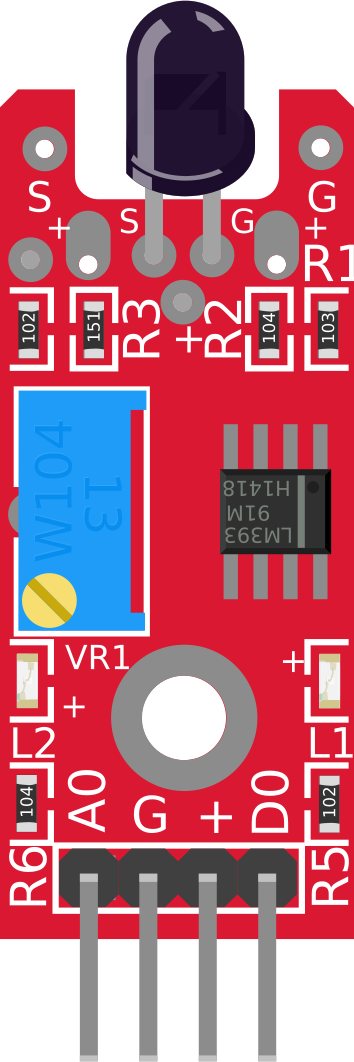
 Design with Flame Sensor in Cirkit Designer
Design with Flame Sensor in Cirkit DesignerIntroduction
A flame sensor is a device that detects the presence of fire or flames by sensing infrared radiation emitted by the flame. It is commonly used in fire alarm systems and safety applications to provide early warning of fire hazards. Flame sensors are highly sensitive to infrared light within a specific wavelength range, making them effective for detecting open flames in various environments.
Explore Projects Built with Flame Sensor
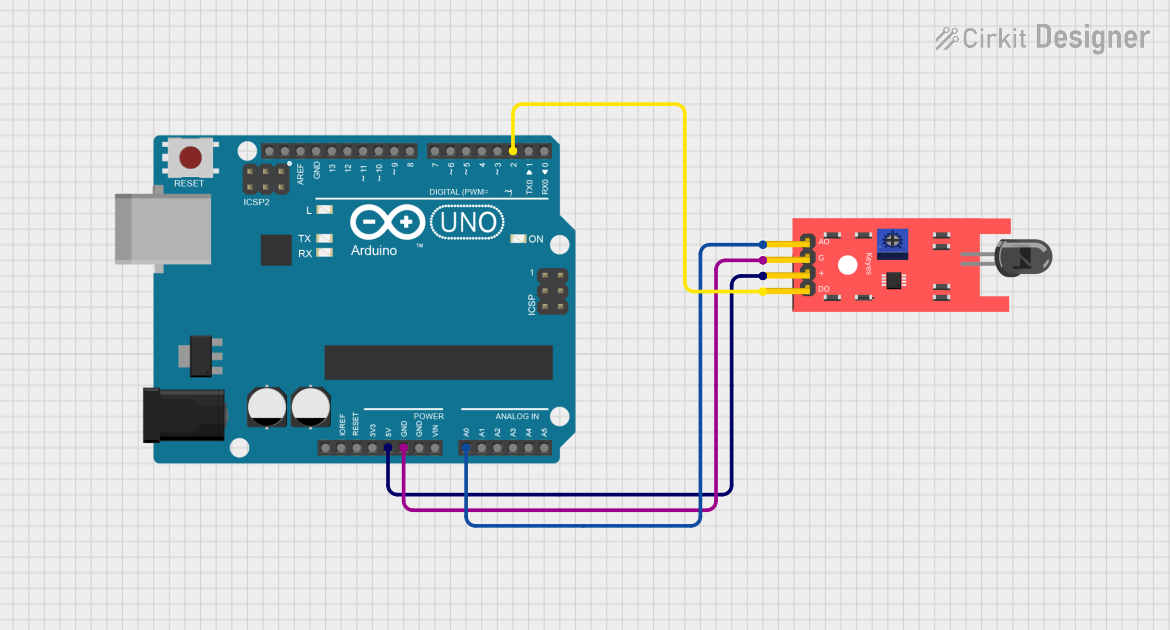
 Open Project in Cirkit Designer
Open Project in Cirkit Designer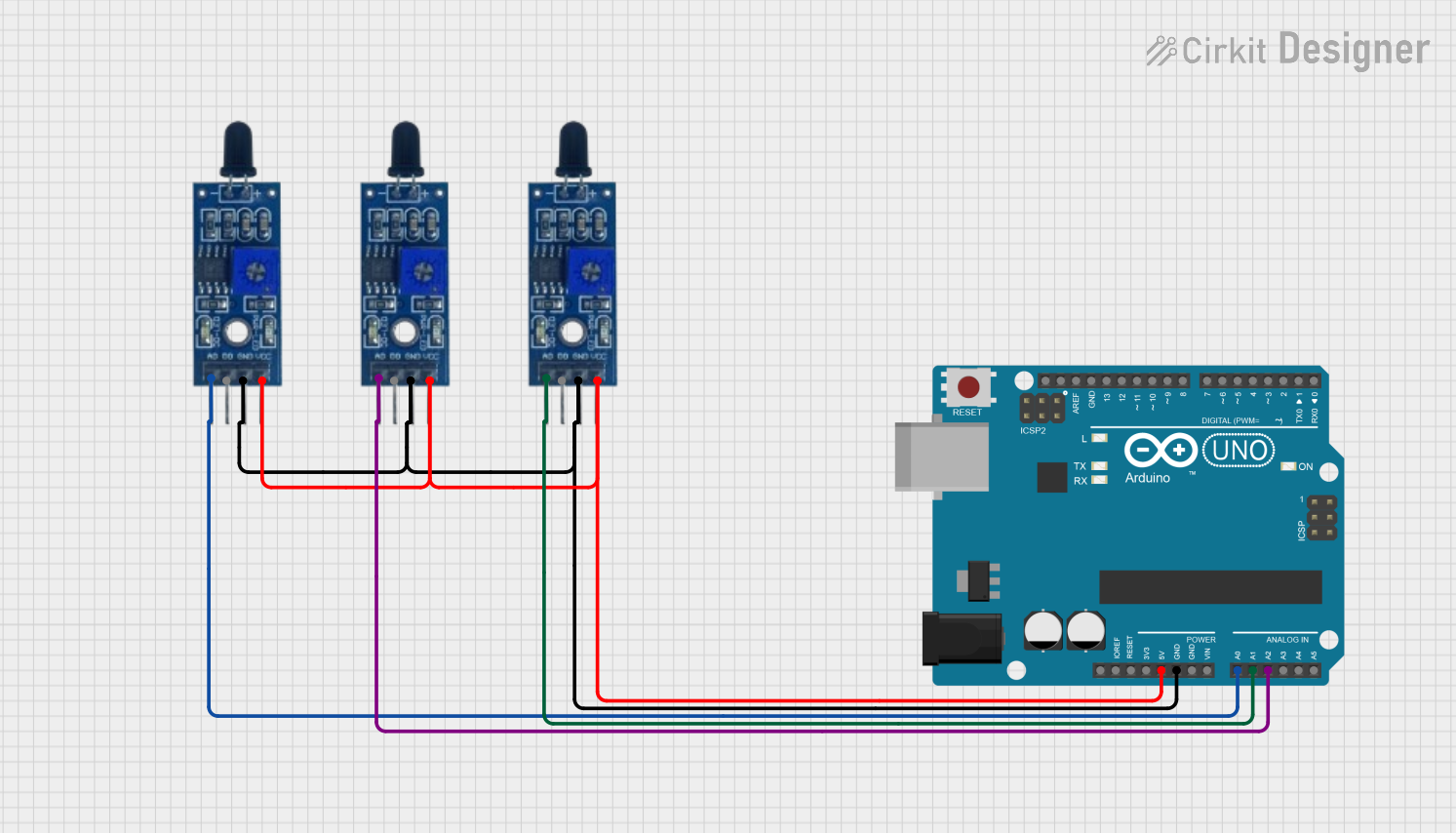
 Open Project in Cirkit Designer
Open Project in Cirkit Designer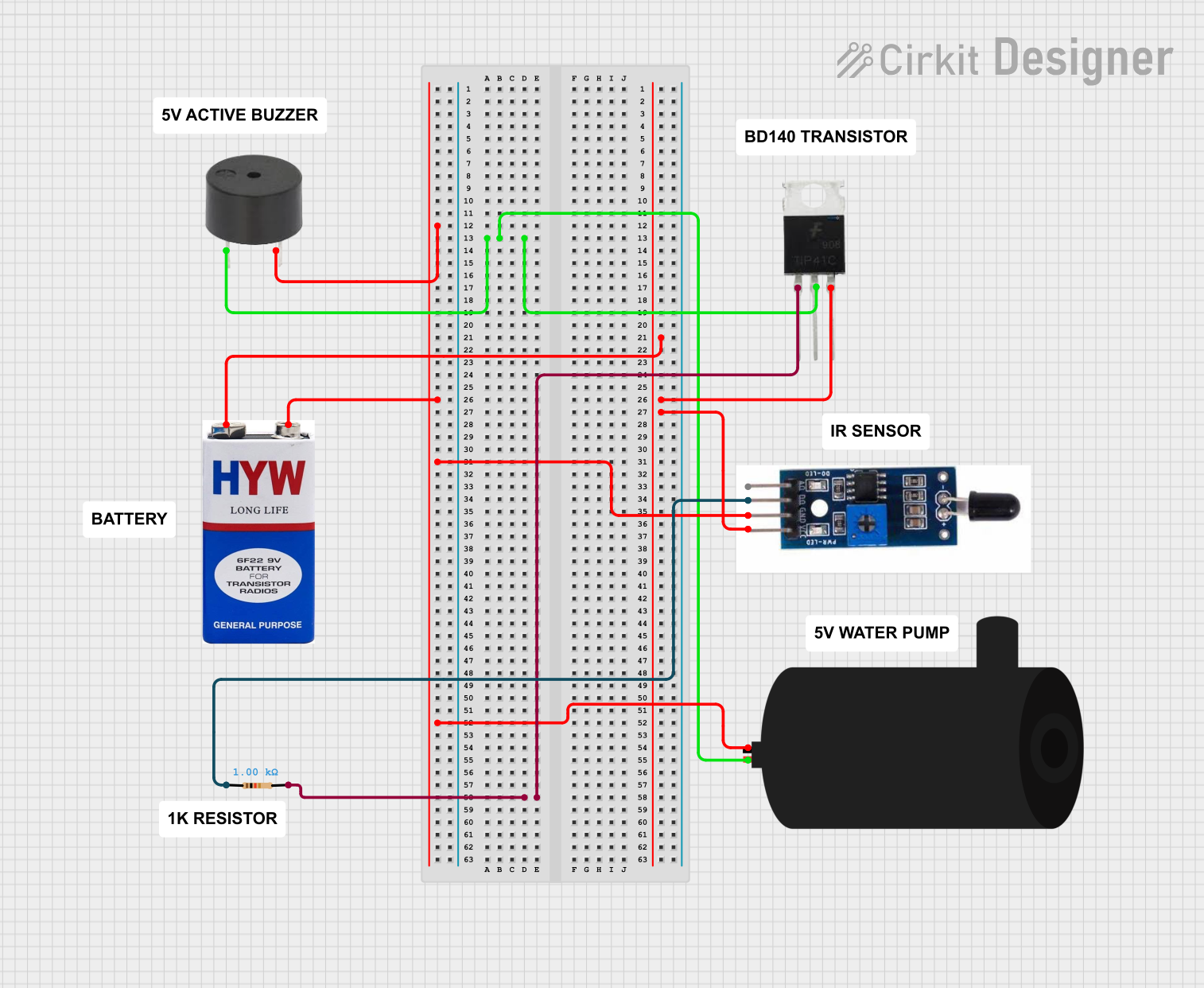
 Open Project in Cirkit Designer
Open Project in Cirkit Designer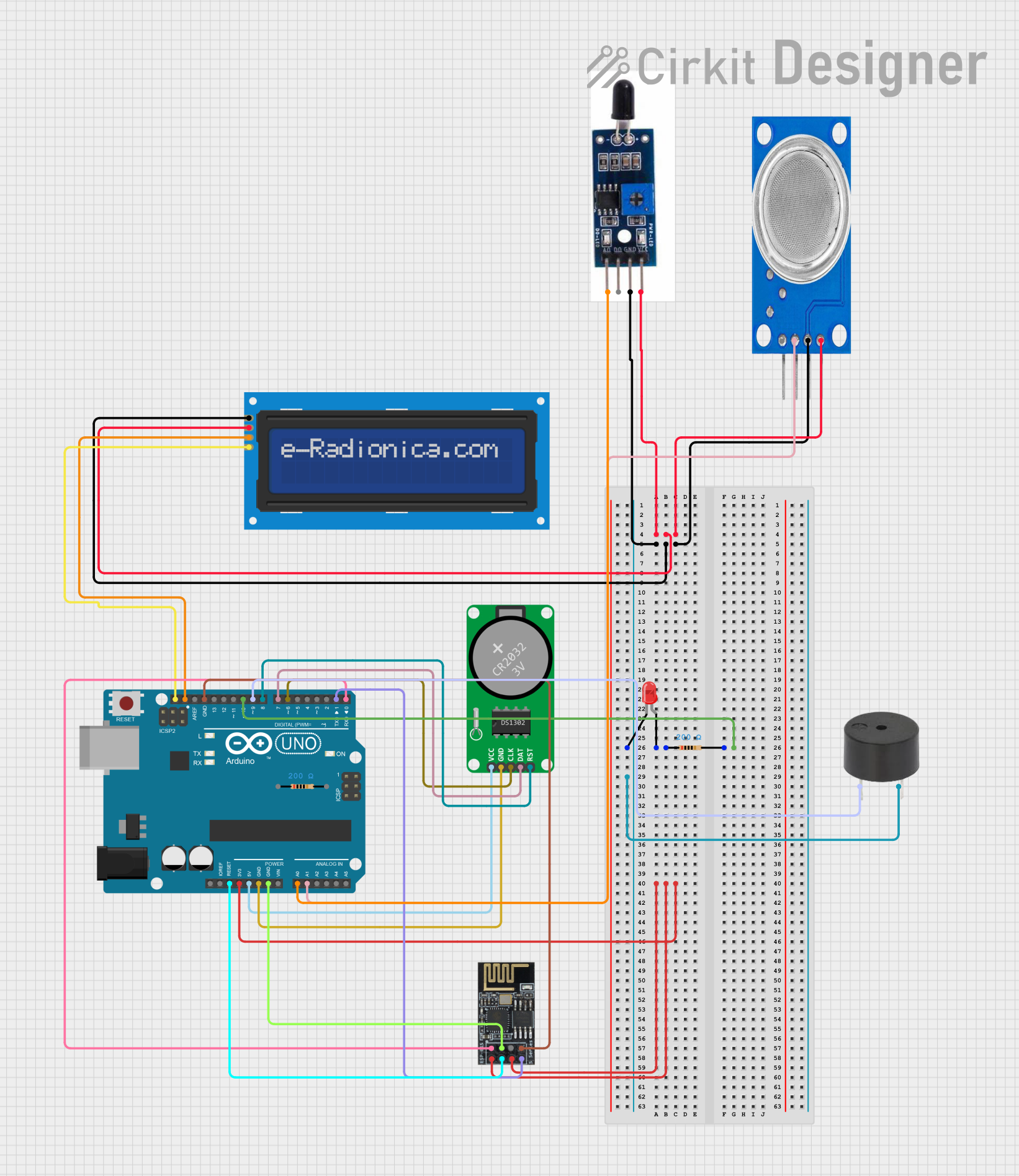
 Open Project in Cirkit Designer
Open Project in Cirkit DesignerExplore Projects Built with Flame Sensor

 Open Project in Cirkit Designer
Open Project in Cirkit Designer
 Open Project in Cirkit Designer
Open Project in Cirkit Designer
 Open Project in Cirkit Designer
Open Project in Cirkit Designer
 Open Project in Cirkit Designer
Open Project in Cirkit DesignerCommon Applications and Use Cases
- Fire alarm systems for residential, commercial, and industrial buildings
- Gas stove and furnace flame monitoring
- Firefighting robots and autonomous systems
- Safety systems in hazardous environments
- Early fire detection in outdoor or remote areas
Technical Specifications
Below are the key technical details of a typical flame sensor module:
| Parameter | Value |
|---|---|
| Operating Voltage | 3.3V to 5V |
| Current Consumption | 20mA (typical) |
| Detection Angle | 60° |
| Wavelength Sensitivity | 760 nm to 1100 nm (infrared range) |
| Output Type | Digital (D0) and Analog (A0) |
| Operating Temperature | -25°C to 85°C |
Pin Configuration and Descriptions
| Pin | Name | Description |
|---|---|---|
| 1 | VCC | Connect to the positive power supply (3.3V to 5V). |
| 2 | GND | Connect to the ground of the power supply. |
| 3 | D0 | Digital output pin. Outputs HIGH when flame is detected, LOW otherwise. |
| 4 | A0 | Analog output pin. Provides a variable voltage proportional to flame intensity. |
Usage Instructions
How to Use the Flame Sensor in a Circuit
- Power the Sensor: Connect the VCC pin to a 3.3V or 5V power supply and the GND pin to ground.
- Connect Outputs:
- Use the D0 pin for digital output. It will output HIGH (logic 1) when a flame is detected and LOW (logic 0) otherwise.
- Use the A0 pin for analog output. This pin provides a voltage proportional to the intensity of the detected flame.
- Adjust Sensitivity: Use the onboard potentiometer to adjust the sensitivity of the sensor. Turn it clockwise to increase sensitivity and counterclockwise to decrease it.
- Integrate with a Microcontroller: Connect the output pins (D0 or A0) to a microcontroller, such as an Arduino UNO, for further processing.
Important Considerations and Best Practices
- Avoid False Positives: Ensure the sensor is not exposed to other infrared sources, such as sunlight or incandescent bulbs, which may cause false detections.
- Placement: Position the sensor with a clear line of sight to the flame for accurate detection.
- Power Supply: Use a stable power supply to avoid fluctuations that may affect sensor performance.
- Testing: Test the sensor in a controlled environment before deploying it in critical applications.
Example Code for Arduino UNO
Below is an example of how to use the flame sensor with an Arduino UNO:
// Define the pins for the flame sensor
const int flameSensorDigitalPin = 2; // Digital output pin (D0)
const int flameSensorAnalogPin = A0; // Analog output pin (A0)
const int ledPin = 13; // Built-in LED for flame detection indication
void setup() {
pinMode(flameSensorDigitalPin, INPUT); // Set D0 as input
pinMode(ledPin, OUTPUT); // Set LED pin as output
Serial.begin(9600); // Initialize serial communication for debugging
}
void loop() {
int flameDigital = digitalRead(flameSensorDigitalPin); // Read digital output
int flameAnalog = analogRead(flameSensorAnalogPin); // Read analog output
// Print analog value to the Serial Monitor
Serial.print("Analog Value: ");
Serial.println(flameAnalog);
// Check if a flame is detected
if (flameDigital == HIGH) {
digitalWrite(ledPin, HIGH); // Turn on LED if flame is detected
Serial.println("Flame detected!");
} else {
digitalWrite(ledPin, LOW); // Turn off LED if no flame is detected
Serial.println("No flame detected.");
}
delay(500); // Wait for 500ms before the next reading
}
Troubleshooting and FAQs
Common Issues and Solutions
No Flame Detection:
- Cause: Incorrect wiring or insufficient power supply.
- Solution: Double-check the connections and ensure the sensor is powered with 3.3V to 5V.
False Positives:
- Cause: Exposure to other infrared sources (e.g., sunlight, incandescent bulbs).
- Solution: Shield the sensor from external IR sources or adjust its sensitivity using the potentiometer.
Unstable Readings:
- Cause: Electrical noise or unstable power supply.
- Solution: Use decoupling capacitors near the sensor's power pins to stabilize the voltage.
Analog Output Not Changing:
- Cause: Flame is too far or not within the sensor's detection angle.
- Solution: Ensure the flame is within the 60° detection angle and within a reasonable distance.
FAQs
Q1: Can the flame sensor detect flames through glass?
A1: No, most flame sensors cannot detect flames through glass as it blocks infrared radiation.
Q2: What is the maximum distance for flame detection?
A2: The detection range depends on the flame size and intensity but is typically up to 1 meter.
Q3: Can I use the flame sensor outdoors?
A3: Yes, but ensure it is protected from environmental factors like rain, dust, and direct sunlight to avoid damage or false readings.
Q4: How do I know if the sensor is working?
A4: Test the sensor by exposing it to a small flame (e.g., a lighter) and observe the digital output (D0) or analog output (A0) values.